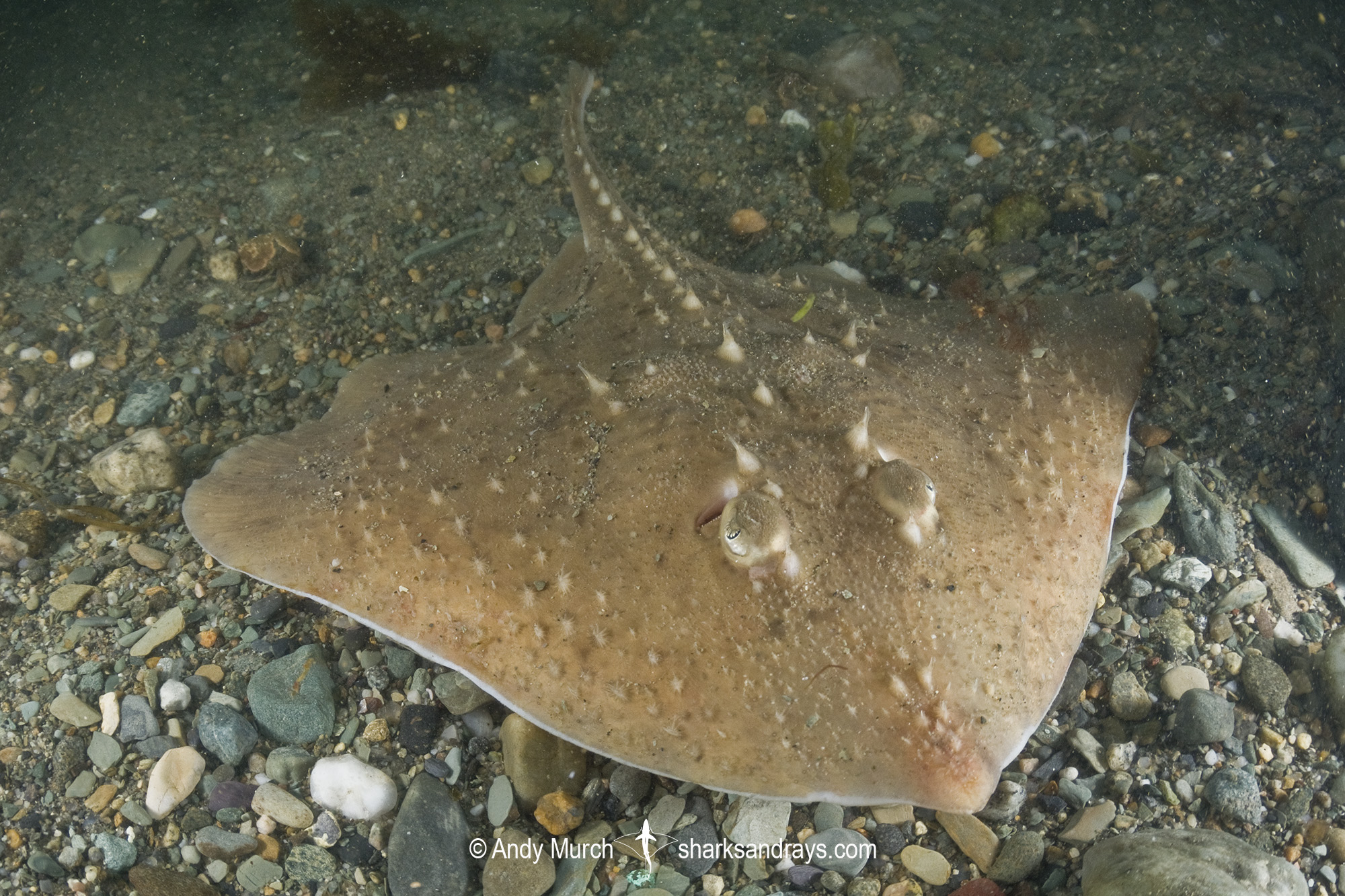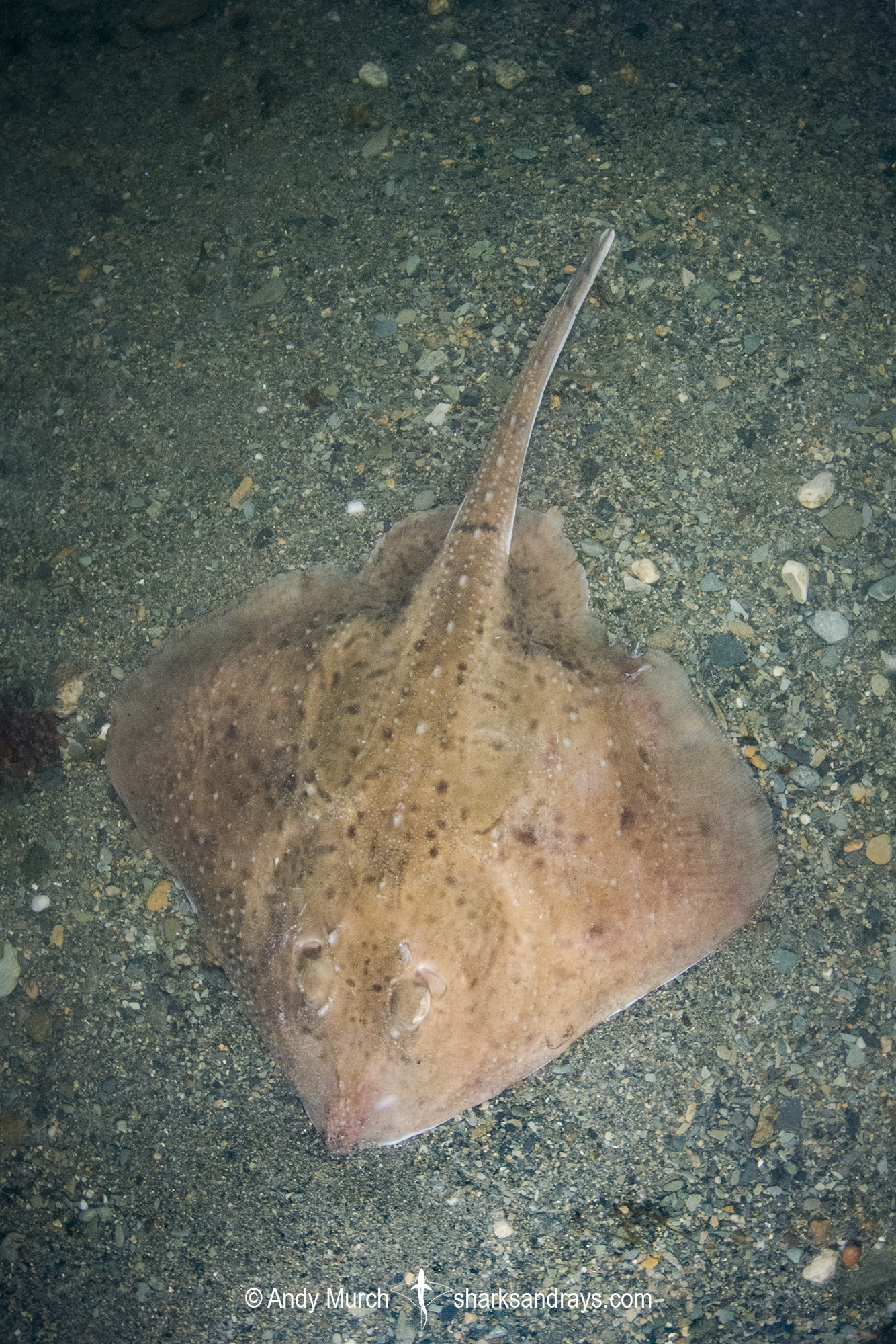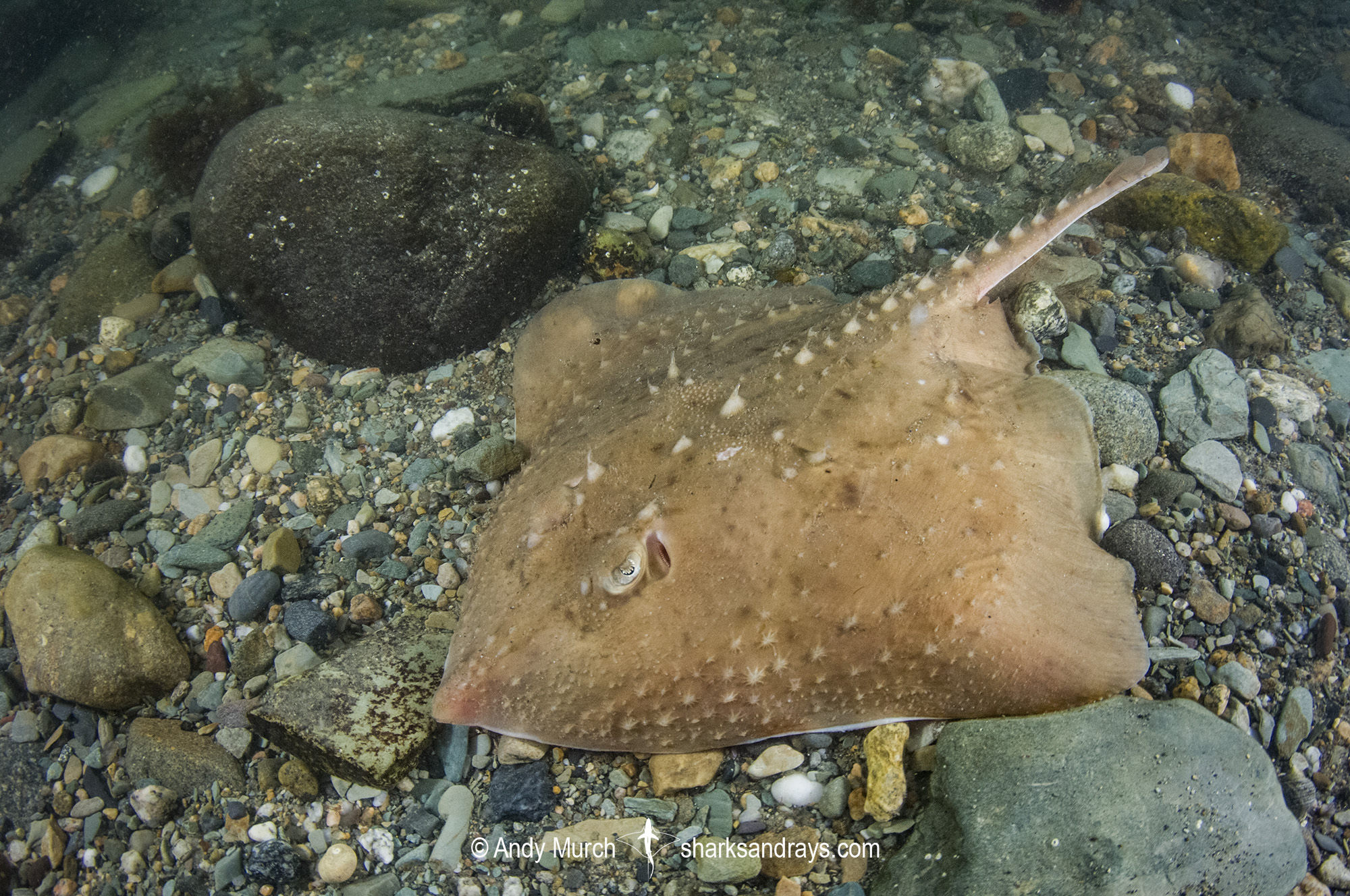Common names
Thorny Skate, Starry Ray.
Binomial
Amblyraja radiata.
Synonyms
Raia americana, Raia scabrata, Raja radiata.
Identification
A large skate with a kite-shaped disc, disc shape more rounded in females, disc width 1.2-1.3 x disc length. Head broad. Eyes medium-sized. Snout length 2.8-3 x orbit length. Mouth wide. Snout short and broadly rounded with a small projecting lobe at tip. Pectoral fin anterior margins undulate; with a central concavity. Pectoral apices narrowly rounded or angular. Pelvic fin anterior lobes much shorter than posterior lobes. Anterior pectoral radials extend almost to snout tip.
Thorns on disc extremely prominent, with stellate bases. 1 pre-orbital and 2 post-orbital thorns, 1-2 thorns on nape, 2-3 on each shoulder, 13-17 extremely tall thorns on midline to first dorsal fin. A row of smaller thorns flank each side of midline thorns from back of head to base of tail. Thorn patches also present on snout and pectoral fins. Tail short and firm, tapering to tip. Two small dorsal fins, joined or narrowly separated. Caudal fin rudimentary. Claspers of adult males short and extremely wide.
Colour
Dorsum brown or greyish brown, or blotchy shades of cream, grey, and brown. Usually with a few scattered irregular dark spots and blotches. Spots on pectorals may form rosettes. Ventrum White.
Size
Maximum length varies considerably by region; 111cm in the western Atlantic, 66cm in the North Sea. Length at birth 8-12cm.

Conservation Status
VULNERABLE
Thorny skate populations plummeted by 80% in the northwest Atlantic over a 50 year span. In 2002/2003 in Canada and the USA respectively, the retention of thorny skates was banned, but bycatch in trawl fisheries (with a probable high rate of post release mortality) still occurs.
Since the ban, thorny skates have increased in abundance in the northwest Atlantic.
In the northeast Atlantic, the thorny skate has limited value and is usually discarded.

Habitat
Subarctic and cold-temperate seas. Demersal on soft bottoms of continental shelf and slope. From close inshore to at least 1400m, usually 25-440m.
Distribution
North Atlantic. Widespread in northern lattitudes. Off North America from South Carolina to Baffin Island, then eastward to southern Greenland, Iceland, British Isles, and France, and northward to Norway and into the Barents Sea in northern Russia.
Reproduction
Oviparous. 10-45 egg cases each year.
Diet
Thorny skates mostly feed on small bottom fishes, crustaceans, and polychaete worms, but they will also consume hydroids, molluscs, cephalopods and echinoderms.
Behavior
In the North Sea, migration experiments showed that 85 % of tagged individuals remained within 93 km of the release site, with longest distance travelled at 180 km (Walker, P., G. Howlett and R. Millner 1997).
Able to detect weak electric fields generated by potential prey organisms and may also generate its own weak electric fields (Fritzsch, B. and P. Moller, 1995).
Reaction to divers
Fairly easy to approach. Usually remains motionless but will move away if disturbed.
Diving logistics
The best place to see thorny skates seems to be Iceland. In particular, the shallow water hydrothermal vent Strýtur Chimney appears to be a hot spot (no pun intended).
Most reports from North America are historical i.e. sightings have declined significantly in the last two decades probably due to population depletions.
What’s new
View our full list of updates
Similar species
No other North Atlantic Amblyraja species have such low thorn density combined with highly prominent thorn size.








